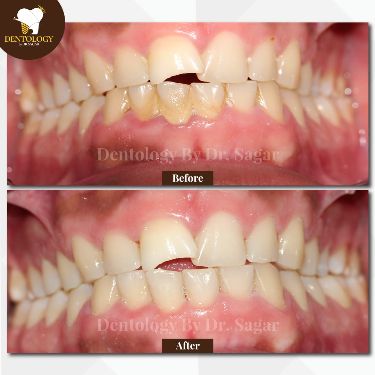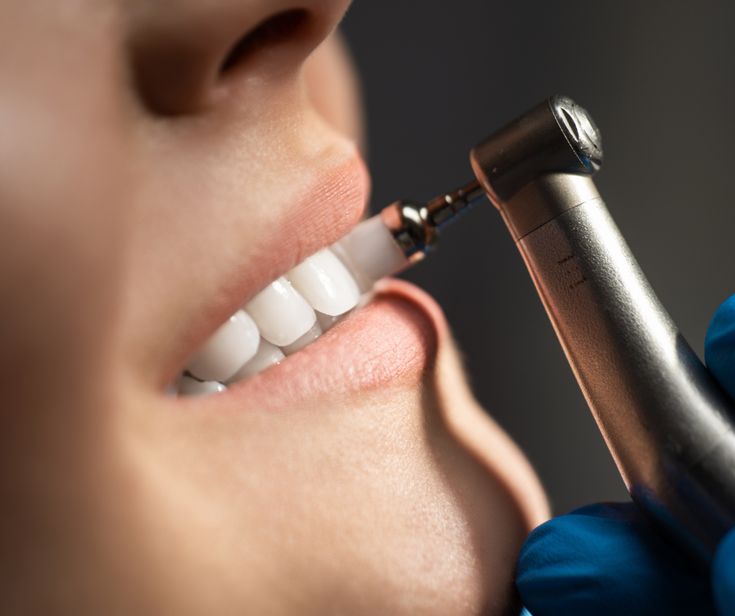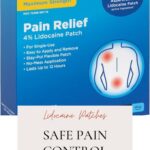Introduction
Dental hygiene plays an essential role in maintaining the overall health of our teeth and gums. Regular visits to the dentist, particularly for a prophylaxis dental cleaning, are vital for preventing oral health problems. While brushing and flossing daily are necessary, professional cleanings at the dentist’s office provide a deep clean that cannot be achieved through home care alone. This article will explore what prophylaxis dental cleaning is, its importance, its benefits, and what you can expect during the procedure.
What is Prophylaxis Dental?
Prophylaxis dental, often called a dental cleaning, is a routine procedure performed by a dentist or dental hygienist to remove plaque, tartar, and stains from your teeth. This preventive treatment helps maintain optimal oral health and reduces the risk of gum disease, cavities, and other dental issues. Unlike the cleanings you perform at home, which only remove surface plaque, prophylaxis dental aims to deeply clean the teeth and gum line, eliminating built-up plaque and tartar that can lead to more severe dental problems.
A prophylaxis dental cleaning is typically recommended every six to twelve months, depending on individual oral health needs and the guidance of your dentist.
The Importance of Prophylaxis Dental
Regular prophylaxis dental cleanings are crucial for preventing oral health issues that could develop over time. Without professional cleaning, plaque and tartar can build up and harden on your teeth. This leads to several potential oral health concerns:
- Prevention of Gum Disease: The primary goal of prophylaxis dental cleaning is to remove plaque and tartar from the gum line. Plaque harbours bacteria, which, if left untreated, can irritate and infect the gums, causing gingivitis. If not managed, gingivitis can lead to periodontitis, a severe gum disease that can damage the gums, bones, and teeth.
- Prevention of Cavities: Plaque is a sticky substance formed by bacteria and sugars in the mouth. If it isn’t removed regularly, it turns into tartar, which can lead to tooth decay. A prophylaxis dental cleaning helps eliminate plaque and tartar, preventing the formation of cavities.
- Improved Overall Health: Research has shown that oral health is linked to overall health. Untreated gum disease has been associated with various health conditions, including heart disease, diabetes, and stroke. By undergoing regular prophylaxis dental cleanings, you are preserving your oral health and, potentially, your overall well-being.
- Fresh Breath: Bad breath, or halitosis, is often caused by the buildup of bacteria in the mouth. Regular cleanings help remove the bacteria responsible for unpleasant odours, resulting in fresher breath.
The Benefits of Prophylaxis Dental
Prophylaxis dental cleanings provide many benefits beyond just maintaining oral hygiene. Some of the most significant advantages include:
1. Prevention of Tooth Decay and Gum Disease
As mentioned earlier, one of the main reasons for undergoing prophylaxis dental cleaning is to prevent tooth decay and gum disease. Removing plaque and tartar before they can cause irreversible damage to your teeth and gums can save you from costly procedures, such as fillings or root canals.
2. Improved Oral Aesthetics
A prophylaxis dental cleaning also gives your teeth a polished, white appearance. Removing stains and buildup from smoking, coffee, or certain foods can leave your teeth looking brighter and more attractive. While cleaning does not whiten teeth like a professional whitening treatment, it helps restore the natural colour of your teeth.
3. Early Detection of Dental Problems
Regular dental cleanings allow your dentist to detect early signs of potential issues, such as cavities, gum disease, or oral cancer. When these problems are caught early, they are much easier to treat and resolve. Dental cleanings are an excellent opportunity to avoid potential issues and maintain optimal oral health.
4. Reduced Risk of Cavities
By thoroughly removing plaque and tartar from your teeth, prophylaxis dental reduces the likelihood of plaque buildup, which can lead to cavities. This is especially important for individuals who are at higher risk of developing cavities, such as those with a diet high in sugary foods or who have a history of tooth decay.
5. Increased Comfort
Cleaning your teeth during a prophylaxis dental session can also help reduce the discomfort caused by excessive plaque buildup. Over time, plaque can make your gums swollen and tender, leading to pain when chewing or brushing your teeth. Regular cleanings prevent this buildup, improving the overall comfort of your mouth.
What to Expect During a Prophylaxis Dental Cleaning
Knowing what to expect during a prophylaxis dental cleaning can help reduce any anxiety you may have about the procedure. Here’s a step-by-step breakdown of what typically happens during a professional dental cleaning:
1. Initial Examination
Before the cleaning begins, your dentist or hygienist will usually perform an initial examination of your mouth. This is to check for signs of any problems, such as gum disease, cavities, or oral infections. They may also take X-rays to assess the health of your teeth and jaw.
2. Scaling
The next step is scaling, which removes tartar and plaque from the surface of your teeth and below the gumline. Your dentist or hygienist will use specialized instruments to scrape off the tartar. Although scaling can sometimes cause discomfort, it is generally not painful.
3. Polishing
Once the scaling is complete, your dentist or hygienist will polish your teeth to remove any remaining plaque and stains. This step uses a gritty paste and a polishing tool that leaves your teeth smooth and shiny.
4. Fluoride Treatment (Optional)
Sometimes, your dentist may apply a fluoride treatment to your teeth after the cleaning. This treatment helps strengthen your teeth’ enamel and provides additional protection against cavities.
5. Post-Cleaning Advice
Once the cleaning is finished, your dentist may provide some post-care advice. This could include tips on maintaining proper oral hygiene at home, such as brushing and flossing techniques, and recommendations for using mouthwash to help fight bacteria and maintain fresh breath.
How Often Should You Get Prophylaxis Dental Cleanings?
The frequency of prophylaxis dental cleanings depends on your individual oral health needs. A professional cleaning every six months is sufficient for maintaining good oral hygiene. However, some individuals may require more frequent visits, such as:
- People with gum disease: Those with a history of gum disease or who are currently experiencing gum issues may require cleanings every three to four months to prevent the condition from worsening.
- People with a high risk of cavities: If you are prone to cavities or have a history of dental decay, your dentist may recommend more frequent cleanings to help prevent further damage.
- People with specific medical conditions: Conditions like diabetes or heart disease may require more frequent cleanings due to the impact these conditions can have on oral health.
Your dentist will recommend a cleaning schedule based on your unique needs.
Potential Risks and Considerations
Prophylaxis dental cleanings are generally safe and beneficial for most people. However, there are some risks and considerations to keep in mind:
- Sensitive Gums: Some people may experience gum sensitivity or minor bleeding during the cleaning process, especially if they have not had a cleaning in a while or have gum disease.
- Underlying Dental Issues: If you have untreated dental problems, such as cavities or gum infections, a cleaning may cause discomfort or aggravate the condition. It’s important to address any underlying issues before cleaning.
- Pregnancy: If you are pregnant, it is best to consult with your dentist before scheduling a prophylaxis dental cleaning. While dental cleanings are generally safe during pregnancy, some women may experience increased sensitivity.

Conclusion
Prophylaxis dental cleanings are an essential part of maintaining good oral health. Regular professional cleanings help prevent serious dental issues such as gum disease, cavities, and bad breath while also improving the aesthetics of your smile. By understanding the benefits and the procedure, you can better appreciate the importance of these cleanings and ensure that you stay on track with your oral health.
Incorporating routine prophylaxis dental visits into your dental care regimen can save you from more significant dental problems in the future. Speak with your dentist about your ideal cleaning schedule, and remember that consistent care at home, combined with professional cleanings, is the key to lasting oral health.
FAQs
1. How long does a prophylaxis dental cleaning take?
A typical prophylaxis dental cleaning takes about 30 to 60 minutes, depending on the condition of your teeth and gums.
2. Is prophylaxis dental cleaning painful?
Most people experience little to no pain during a prophylaxis dental cleaning. Some mild discomfort or sensitivity may occur, particularly if you have existing gum disease.
3. Can I eat after a dental cleaning?
Yes, you can eat after a prophylaxis dental cleaning. However, avoiding very hot or cold foods for a few hours is best to prevent discomfort if your gums are sensitive.
4. Are prophylaxis dental cleanings necessary if I brush and floss regularly?
Professional cleanings are still necessary even if you brush and floss daily. They remove plaque and tartar accumulating in hard-to-reach areas and provide a deeper clean than home care alone.
5. How often should I get a prophylaxis dental cleaning?
For most people, a cleaning every six months is recommended. However, those with specific oral health needs may require more frequent visits.
Explore more: hadokin










